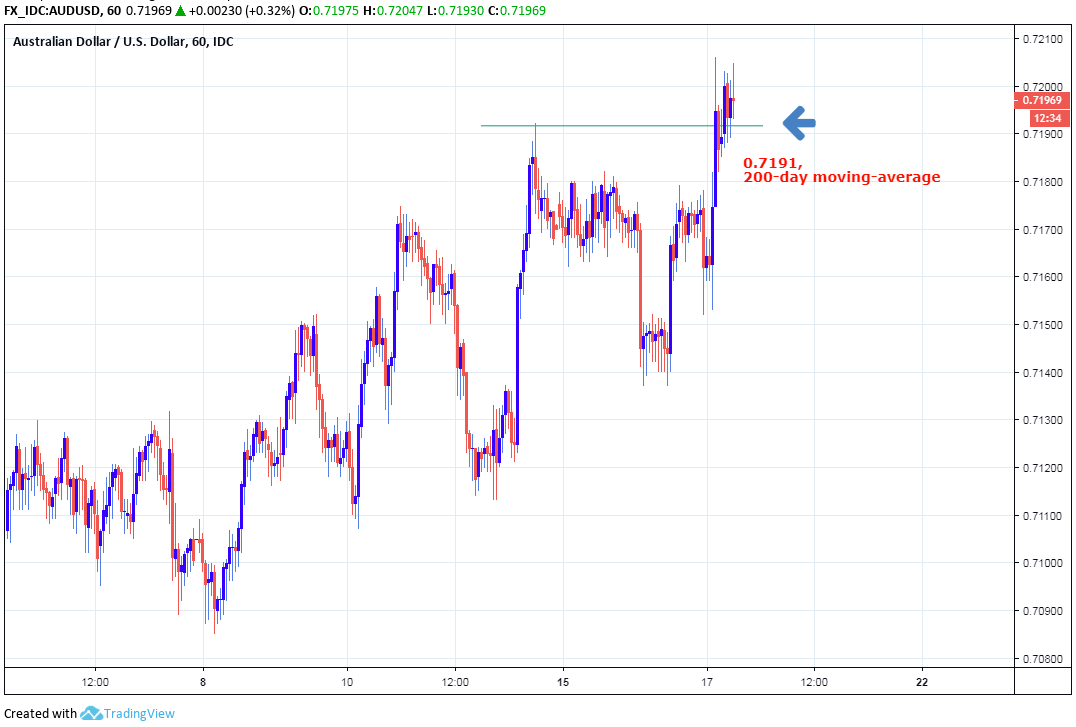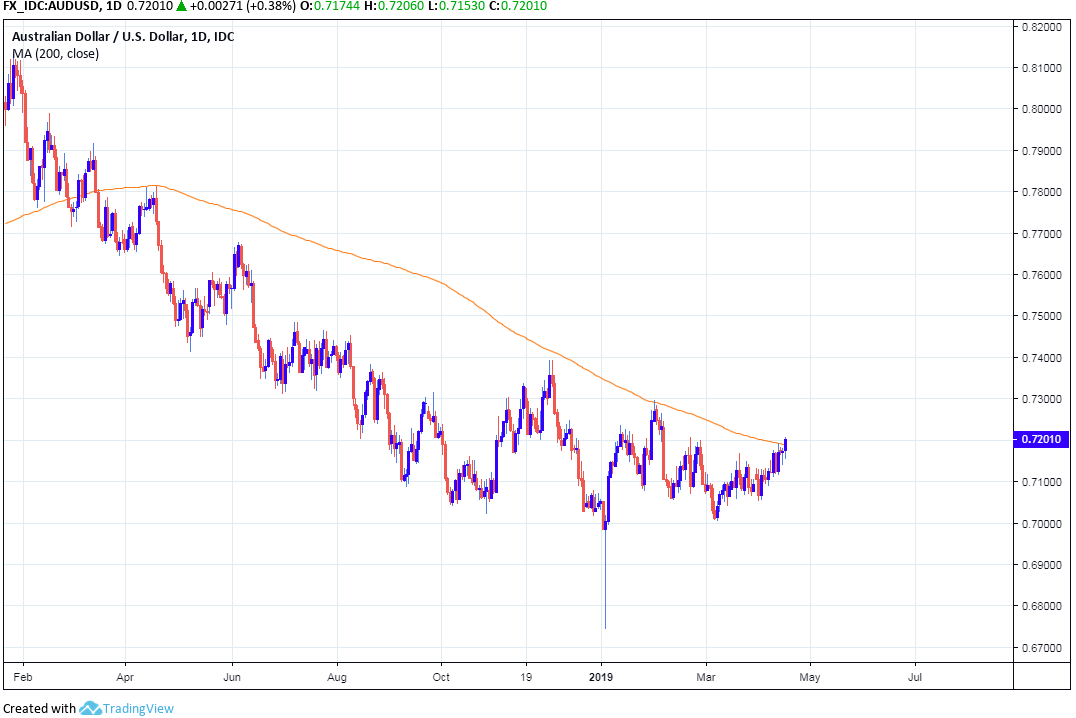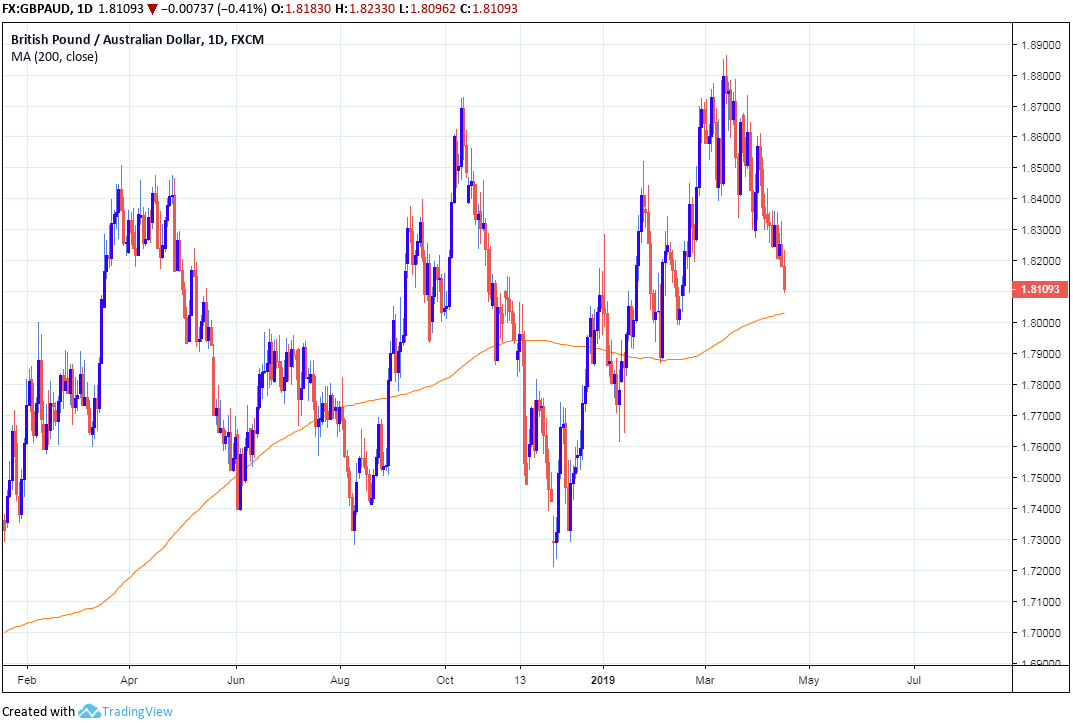The Australian Dollar Crosses Key Rubicon on Route to Higher Levels
- Written by: James Skinner

Image © Desiree Caplas, Adobe Stock
- AUD crosses 200-day moving-average after Chinese data surprises.
- Green light for further gains means AUD must hold 0.7191 Wednesday.
- But FX markets are now eyeing Thursday's AUD jobs report nervously.
The Aussie Dollar advanced across the board Wednesday after a series Chinese economic numbers surprised on the upside, helping to push the Antipodean unit over a key Rubicon-like milestone during the overnight session which bodes for further advances.
China's better-than-expected economic figures further suggest that "green shoots of recovery" are sprouting up around the world economy, which has boosted currencies and asset prices that are sensitive to global growth and trade, while helping to undermine the U.S. Dollar.
Australia's Dollar crossed over its 200-day moving average for the first time in 12-months Wednesday after China's economy was cast in a resilient light in the first quarter, which is significant for the Antipodean outlook given the 0.7191 area has acted as a tough resistance barrier in recent times.
The move higher by the Aussie meanwhile corresponded with a half-a-percent slip in the Pound-to-Australian Dollar exchange rate to record a rate at 1.8119, ensuring a steady and almost uninterupted trend lower since mid-March.
Analysts at some of the world's major banks are now watching closely to see whether the AUD/USD rate can close above that threshold during the Wednesday session, with price action during overnight trading heading into Thursday likely to prove key.
Should AUD/USD break into a more constructive pattern, we would expect to see commensurate pressures build on the GBP/AUD.
"The 200-day moving average has been a key resistance level over the last 12 months, with AUD/USD failing to lift above it on three occasions only to break above it today after the stronger than expected Q1 Chinese GDP data. If AUD can close above the 200-day moving average in New York after tommorrow's Australian March labour market data, the 200 day moving average may begin to act as a technical support level," says Kim Mundy, a strategist at Commonwealth Bank of Australia.

Above: AUD/USD rate shown at hourly intervals.
"AUD/USD has started to erode the 200 day ma at .7191. The market faces tough resistance in this vicinity, namely .7207 (end of February high) and this may take several attempts to crack. Above here targets initially the 55 week ma at .7282.It stays bid above the .7105 uptrend," says Karen Jones, a technical analyst at Commerzbank.
Jones says price action was "exhaustive" in January, meaning the multi-year downtrend in the AUD/USD rate looked to have come to an end at the 0.6738 level. She says the Aussie will remain bid and biased toward further gains so long as the 0.7090 level holds.
The Chinese economy grew at an annualised pace of 6.4% in the first-quarter of 2019, unchanged from the rate of growth seen in the final quarter of last year, when markets had looked for it to dip to 6.3%.
Furthermore, growth in fixed asset investment, industrial production and retail sales all picked up during March, suggesting the world's second largest economy may have gained more momentum heading into the second quarter.
Industrial production growth was particularly strong, rising from 5.3% in February to 8.5% by the end of March, which is consistent with the rebound seen in China's trade surplus of late that was driven by a pick up in exports.

Above: AUDUSD rate shown at daily intervals, with 200-day moving-average in orange.
Australia's Dollar is substantially underwritten by a large commodity trade with China so developments in the world's second largest economy are important for the the Antipodean unit, which has a close correlation with China's Yuan. The USD/CNH rate was down -0.45% Wednesday.
However, it's developments in the domestic economy and how they impact Reserve Bank of Australia (RBA) interest rate policy that will matter most to the Aussie over the coming months. Especially as markets are betting heavily that the RBA will cut its interest rate before the year is out.
On that note, Australian unemployment data for the month of March is due out in the early hours of Thursday and markets will scrutinise the numbers closely for cues on the direction of the Australian Dollar.
Consensus is for jobs growth of just 15.2k to follow the meagre 4.6k new jobs that were added in February and for the unemployment rate to reverse its recent fall by rising back to 5%. The data is due out at 02:30 London time.
"We predict Australian employment expanded by 20,000 in March and that the Australian unemployment rate will lift from 4.9% in February to 5% in March," says Mundy. "AUD and Australian rates will be very sensitive to the unemployment rate given the emphasis place on it by RBA officials in recent weeks. Although a stronger than expected labour market result will push AUD higher, participants may still be positioned to sell AUD into rallies because of the medium-term risk of RBA cuts."

Above: Pound-to-Australian-Dollar rate shown at daily intervals.
The RBA said Tuesday that it would take a scenario where inflation did not move any higher and the unemployment rate "trended up" in order for the bank to actually go ahead and cut its interest rate.
With the consumer price index stuck below the 2% lower bound of the 2%-to-3% target, the RBA has been attempting to encourage a pick-up in these underwhelming inflation pressures for a number of years now and to that end, the cash rate has been at a record low of 1.5% since mid-2016.
RBA rate setters need either faster wage growth for Australian households, or faster economic growth, in order to get the consumer price index back into the target band. Lower unemployment and more jobs are identified as key to a pick-up in inflation, which is why markets will watch Thursday's numbers closely.
If Thursday's labour market report is able to keep the Australian Dollar on its front foot over the coming days then the Antipodean unit will face another test next week, in the form of the first-quarter consumer price index. Another weak inflation reading would be taken badly by the market.
Time to move your money? Get 3-5% more currency than your bank would offer by using the services of foreign exchange specialists at RationalFX. A specialist broker can deliver you an exchange rate closer to the real market rate, thereby saving you substantial quantities of currency. Find out more here.
* Advertisement




